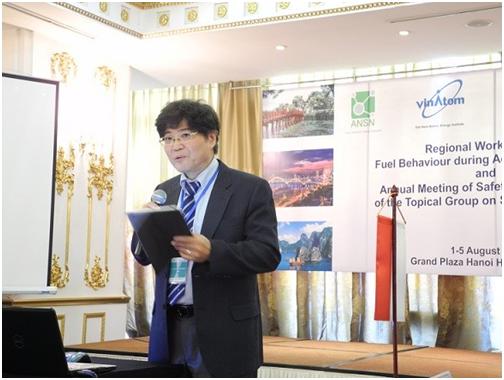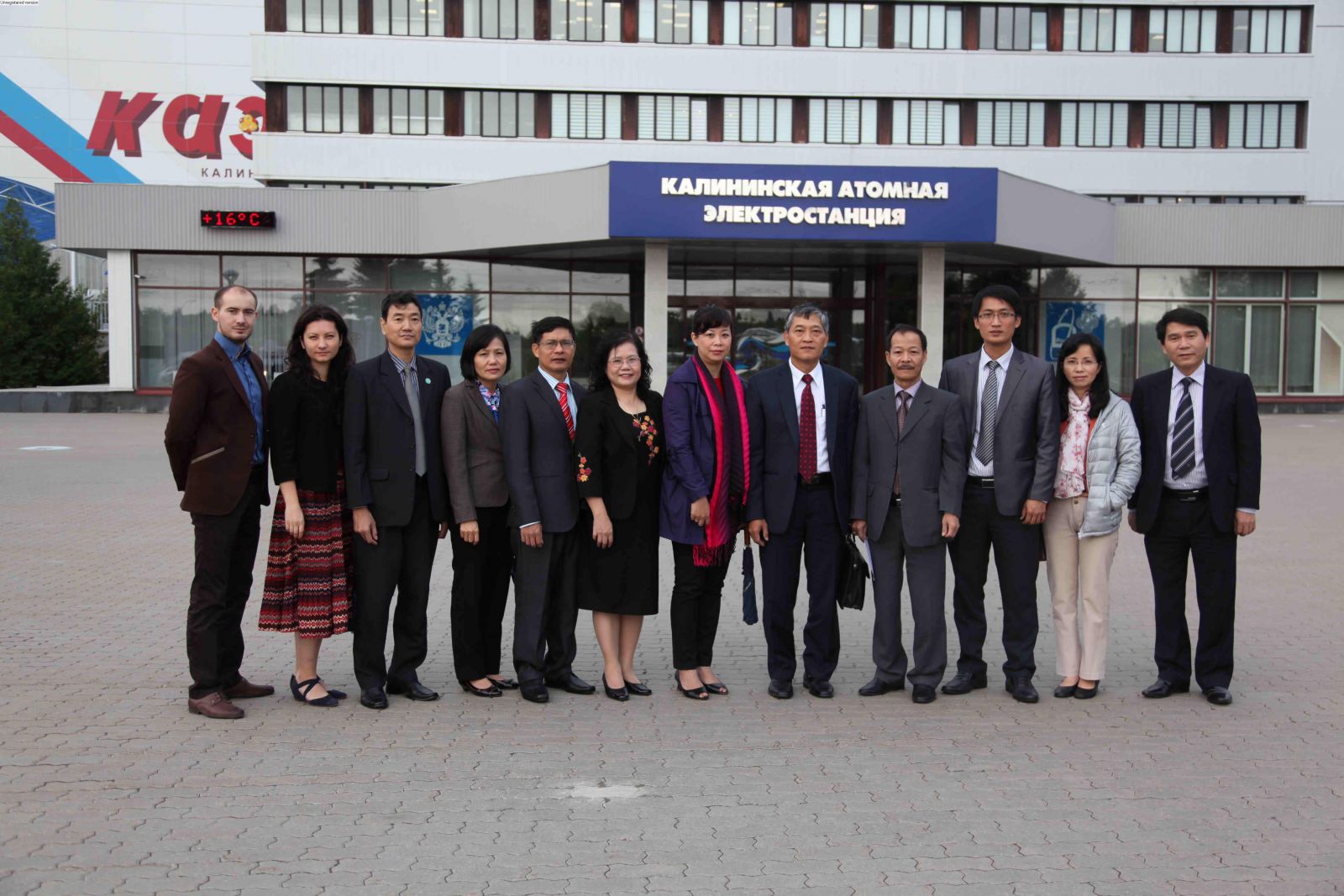With the permission of Vietnam Atomic Energy Institute (VINATOM), Nuclear Training Center (NTC) in cooperation with the International Atomic Energy Agency (IAEA) opened the Regional Workshop on Fuel Behavior during Accident Conditions on the 1st August 2016 in Hanoi.
 The participants of the Regional Workshop held in Hanoi, Vietnam
The participants of the Regional Workshop held in Hanoi, Vietnam
Attending the workshop, on the Vietnamese side were leaders of VINATOM and NTC, representatives from the Vietnam Agency for Radiation & Nuclear Safety (VARANS), and Institute of Nuclear Science and Technology (INST). International delegates included officials from IAEA and several countries in Asia such as Indonesia, Malaysia, South Korea, Thailand and the Philippines.
 PhD. NGUYEN Hao Quang, Vice – President of VINATOM made opening speech at the Workshop
PhD. NGUYEN Hao Quang, Vice – President of VINATOM made opening speech at the Workshop
The purpose of this regional workshop is to provide a forum for international experts to review the current situation and the state of the performance of nuclear fuel for water cooled reactors under severe transients and LOCA conditions. The workshop covers analytical and experimental RIA and LOCA studies and international programmes, power ramp, and severe accident analysis.
In recent years, the demands on ‘fuel duties’ have increased, including higher burnups and longer fuel cycles. To satisfy these demands, fuel vendors have developed new cladding and fuel material designs to provide sufficient margins for safe operation of the fuel components. These developments enable water cooled reactors, which contribute about 95% of the nuclear power in the world today, to operate safely under all operating conditions including severe transient or accident conditions, such as reactivity initiated accidents (RIAs) or loss of coolant accidents (LOCAs), the behavior of the fuel can be adequately predicted and the consequences of such events can be safely contained.
 Mr. Kim MANGOONG controlled the Workshop
Mr. Kim MANGOONG controlled the Workshop
The ATF LOCA studies indicate that peak cladding temperatures could be reduced (75 °C) simply by replacing the Zircaloycladding with a cladding (such as FeCrAl) with a higher volumetric heat capacity, even using UO2 as the fuel. An additional, advantage (lower PCT) could also be gained by employing a fuel such as FCM. The use of ATFs results in an increased margin of time for accident response and mitigation measures. This additional time, to restore core cooling and mitigate the accident, is on the order of an hour to a few hours. Decrease of hydrogen generation, which can exacerbate the accident, is also slowed by the use of ATFs.
In addition, Mr. Kim provided an overview of IAEA safety standards, an overall idea for the revision of Safety Guide NS-G-1.2 from the perspective of enhanced safety in fuel design. They reflected an international consensus on what constitutes a high level of safety for protecting people and the environment from harmful effects of ionizing radiation; and were applicable throughout the entire lifetime of facilities and activities – existing and new – utilized for peaceful purposes, and to protective actions to reduce existing radiation risks.
Yixing Sung, Westinghouse Electric Company, LLC Industry shared some industry perspectives on fuel performance during accident conditions. Accordingly, Westinghouse is developing a game-changing fuel solution that provides substantial improvements in: –Accident tolerance –Fuel economics –Reduced plant licensing requirements. They currently are exploring both pellet and cladding concepts as Accident Tolerant Fuel (ATF) design: – Coated cladding concepts can deliver significant LOCA margins and improvements in severe accident tolerance –Silicon Carbide (SiC) cladding concepts can survive extreme accidents.
Ivica Basic, APoSS d.o.o (Croatia) added that for improving the understanding of nuclear fuel behavior under steady state, transient and accident conditions, it is recommended to extend the experimental database, especially for LOCAs and RIAs for high burnup as well as for advanced cladding and fuels; develop more accurate and precise computer codes:– Coupled codes between various disciplines, – Advanced codes such as computational fluid dynamics; improve the reliability of computer codes and their utilization (‘user friendly‘ codes); improve the design and accident studies’ methodologies, including the use of BE analysis associated with uncertainty quantification.
In order to share relevant information, participants were divided into two groups, regulatory group and TSO / research / industry group, to deal with the task: What information is required from the regulatory body, TSO and operation organization on: Fuel/ Core design; Developing operating limits for fuel/ core; Observing fuel/ core behavior under abnormal conditions in view of supporting fuel and core design for ordering fuel for first core and reloads and supporting licensing review for reactor core design. After discussion within each group were presentations of group work in plenum and Q&A. This activity aimed at review of existing legal framework for fuel behavior in the basis of international best practices (IAEA standards and best practices) and exploring possibility to develop new detail regulatory standards (including criteria) to support licensing decision.
 The participants visited the simulators system at NTC – VINATOM
The participants visited the simulators system at NTC – VINATOM
The workshop ended the last working session on the afternoon of August 5th with the participants’ visit to NTC, VINATOM, 140 Nguyen Tuan, Hanoi. Here, Mr. LE Dai Dien, Deputy Director of the NTC and related officials, welcomed and introduced the simulators system of VVER 1200 installed in the center. This system is being exploited and used. The expert team illustrated the scenarios with transition and accidents for analytical calculations, verifying computational results from a number of hydrothermal computational programs by standard problem formulation to meet the purpose of researchers. All participants expressed interest in the simulators system. At the end of the visit, Le Dai Dien sincerely thanked the participants for their contributions to the success of the regional workshop.
PHAM Thi Thu Trang, MA. – Nuclear Training Center




